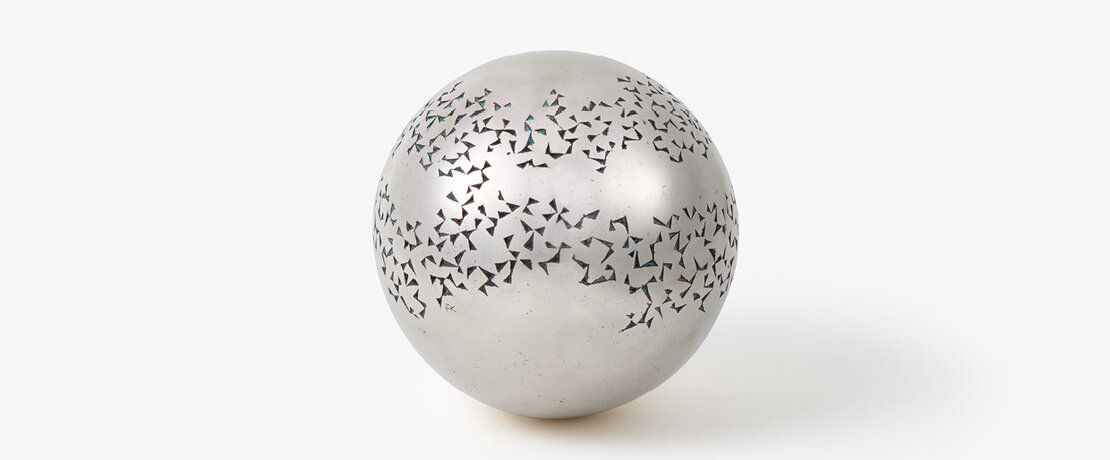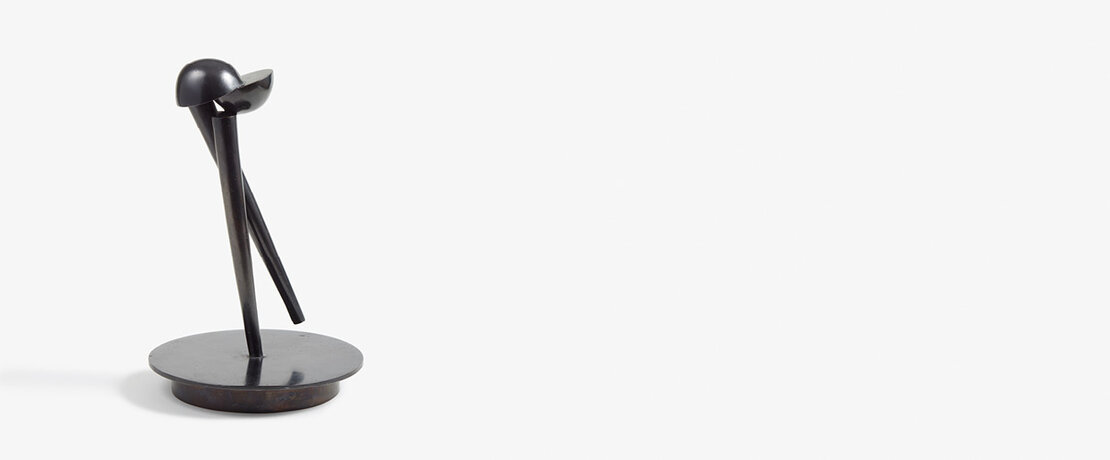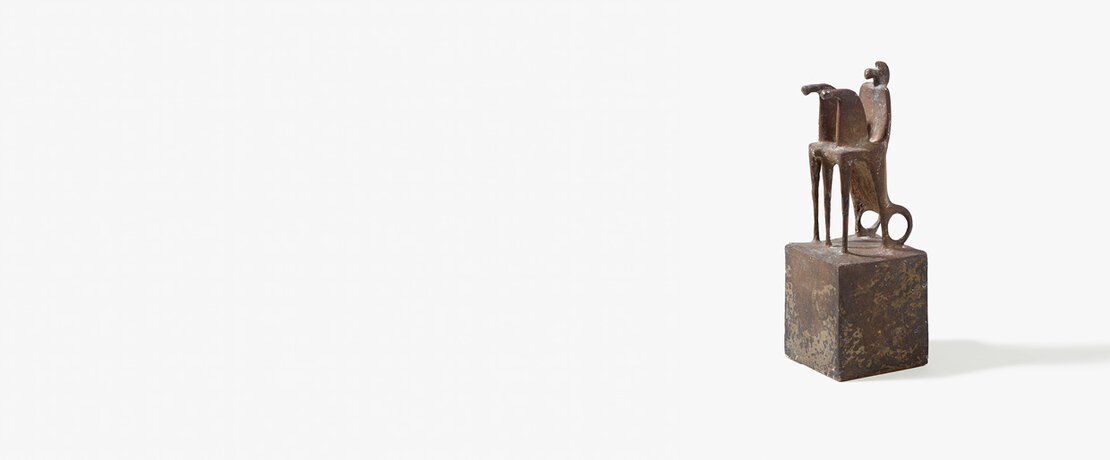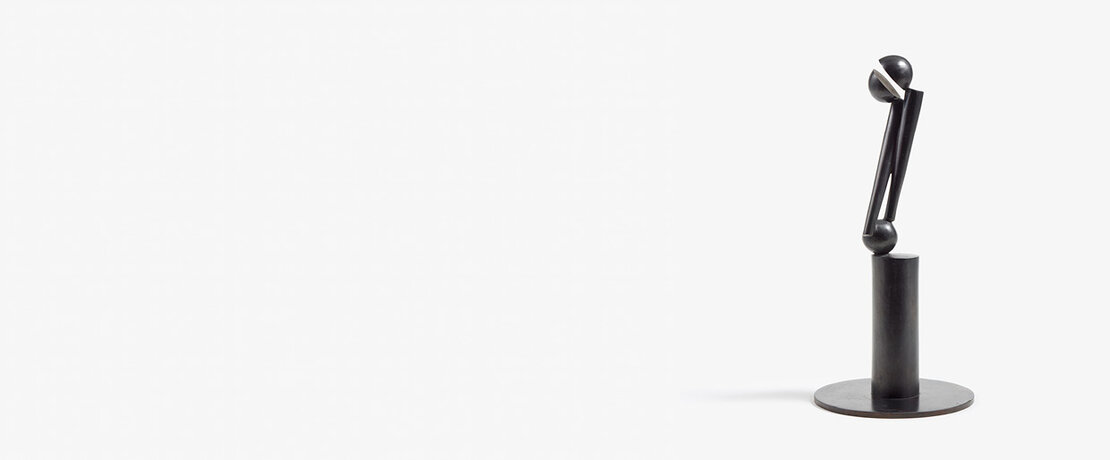Small Sculptures by Fritz Koenig (1924-2017)
The contraction into a symbolic statement, the dialogue between landscape and sculpture, the abstraction related to reality and the play between the elements: our expert for modern and contemporary art, Mario von Lüttichau, about the thoughts and motives of the German artist Fritz Koenig.

This select, fine private collection of 17 small sculptures and bozetti shows a cross section of this artist’s work. Kleine Sämann is an example of the first step, Kleine Biga one of the first strong and authentic appearances. It was with The Sphere in New York that Koenig reaches international esteem, and manifold votive panels, epitaphs, the repeated analysis of horses and the theme of Zwei brought wide-reaching recognition and established him a secure place in the history of European sculpture.
A retrospective of the sculptor Fritz Koenig in Florence, the city of brilliant and first-class Renaissance sculptors from the exceptional ranks of Michelangelo, Donatello, Benvenuto Cellini, Giovanni Bologna, called Giambolognia. It is hard to believe: the great-grand-student of Adolf von Hildebrandt (1847-1921) in the Uffizi Galleries, in the Boboli Gardens, at the place where Hildebrandt lived from 1874, studied Italian Renaissance and mused over Das Problem der Form in der bildenden Kunst, the thoughts of which were published in book form in 1893 in Straßburg. Resident near Landshut until his death in 2017, the press celebrates the artist Fritz Koenig and his most comprehensive sculpture exhibition in the Arno-divided city of the Medici.

No Heroes but Horses
Fritz Koenig is one of the most respected sculptors of the post-war period whose spiritual imprint and individual style is connected rather to nature and follows tendencies to abstraction in an informal and playful way. Born in Würzburg in 1924, he begins studying under Anton Hiller in 1946 following military service. Hiller’s teacher Hermann Hahn, in turn, was rooted in the tradition of the strict forms of the early classical antiquity of Adolf von Hildebrandt. Reflecting on his experiences in the armed forces, Koenig’s themes circulate around the votive, the cross and, repeatedly, forms of the epitaph. No heroes of recent times, but rather horses marching in step, crowds of horses, such as Koenig experienced in the Camargue, his early interest of which would be realised with his own stud farm. The quadriga, groups of riders and other depictions with horses are the first sculptural group formulations that the Villa Massimo-scholar works up from the mid-1950s to one of his signets. From 1961, Fritz Koenig develops the area around Ganselberg just outside the town of Landshut into a spacious studio where horses and his sculptures could develop together and where his art harmonises with nature.

The art of construction
Alongside ‘free’ sculpture, Fritz Koenig returns often to the design of ‘Kunst am Bau’, working on church portals, tabernacles and alter crosses such as for the Würzburg Cathedral, creating his first eye motifs and spherical shapes, and forming towering caryatids into equally large cross motifs. Koenig thus systematises his geometric-abstract paraphrases in sculptural language, with which he “drives his basic figurations into the abstract in order to reintroduce them into the representational”, says Peter-Klaus Schuster.[1]

Cover: Bilderschriftkugel, 1968. Silver. Ø 19.1 cm. Engraved monogrammed 'FK'.
[1] Peter-Klaus Schuster, Die Grammatik der Formen. Zur Sprache der Skulpturen von Fritz Koenig, in: exhib. cat.: Fritz Koenig. Skulptur und Zeichnung, Munich 1988, p.45
